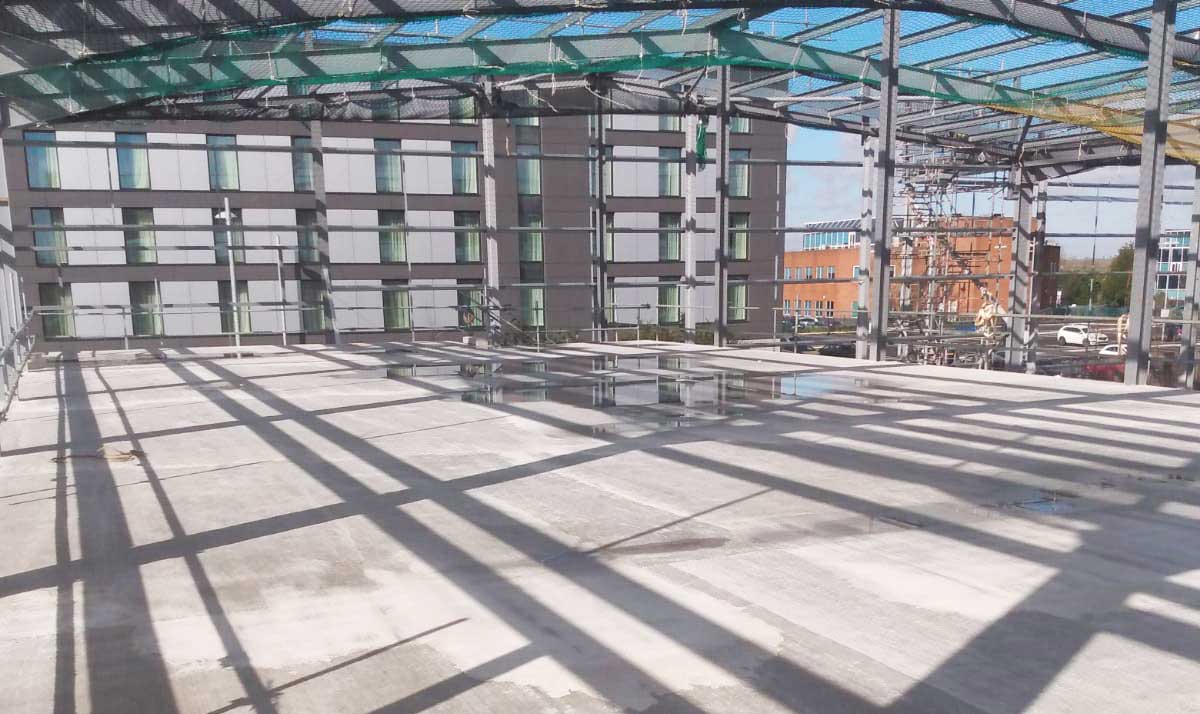Opening the Ecological Advantages of Recycled Composites in Construction and Style
In the realm of construction and style, the usage of recycled composites holds considerable pledge for boosting sustainability techniques and reducing environmental effect. The change in the direction of a much more lasting future in these markets pivots on unlocking the complete potential of recycled composites.

Ecological Effect Decrease
The decrease of ecological influence via making use of recycled composites in construction and design plays a vital duty in lasting methods. By including recycled compounds right into structure materials, the construction sector can considerably reduce its carbon impact and add to an extra green future. These lasting products, made from repurposed plastics, wood fibers, or various other recycled components, offer a practical alternative to standard building materials without jeopardizing on top quality or resilience.
Recycled composites aid draw away waste from garbage dumps and decrease the requirement for drawing out raw materials, hence preserving all-natural resources. Additionally, the manufacturing procedure of these compounds usually takes in much less power and sends out fewer greenhouse gases contrasted to producing virgin products (composites). This shift towards making use of recycled composites not just reduces ecological harm however additionally promotes a round economic situation by motivating the reuse of products that would or else be thrown out
Waste Minimization
With an emphasis on minimizing waste in building and construction and design, the combination of recycled composites uses a sustainable option to decrease ecological influence. Waste minimization is an important facet of sustainable methods, and using recycled compounds presents a chance to accomplish this objective effectively. By using products that have actually currently served their preliminary objective, such as recycled plastics or reclaimed wood fibers, the building and construction and design sectors can substantially decrease the quantity of waste created and sent to landfills.
Recycled compounds have the possible to draw away significant amounts of waste from traditional disposal techniques, adding to an extra circular economic situation where resources are made use of successfully. Additionally, the production procedure of recycled composites commonly eats much less energy and generates fewer discharges contrasted to virgin materials, further lowering the environmental footprint of building and construction and design projects.
Implementing waste minimization methods via the unification of recycled compounds not just helps in saving all-natural sources yet also advertises a much more lasting strategy to structure and designing for a greener future.
Energy Conservation
Incorporating recycled compounds not just reduces waste in building and construction and style but also plays an essential function in enhancing power conservation practices within the sector. The usage of recycled composites in construction can considerably add to power conservation through numerous ways. The manufacturing of virgin materials typically requires considerable energy inputs, whereas utilizing recycled compounds consumes much less power, therefore reducing total energy usage. Additionally, integrating recycled compounds can add to better insulation residential or commercial properties in structures, reducing the requirement for excessive visit heating or air conditioning, and consequently reducing power usage for climate control. In addition, the lightweight nature of lots of recycled compounds can cause lighter frameworks, requiring much less power for transport and installation. By advertising the use of recycled composites in construction and style, the industry can make considerable strides in the direction of attaining energy performance and decreasing its carbon impact, inevitably adding to a more sustainable developed setting.
Carbon Footprint Decrease
Enhancing sustainability practices with the use of recycled composites in building and style significantly reduces the carbon impact of the sector. By incorporating recycled materials right into the manufacturing of compounds, the demand for virgin sources lowers, bring about reduced power intake and greenhouse gas discharges try here connected with conventional manufacturing processes. This decrease in carbon footprint is important in combating environment modification and advertising a more eco-friendly approach to building and construction and layout.
In addition, making use of recycled compounds likewise helps in drawing away waste from landfills, therefore alleviating the environmental influence of disposal and promoting a round economic climate. The carbon impact reduction attained with the fostering of recycled composites straightens with the worldwide push in the direction of sustainable methods and the reduction of commercial emissions. It browse around this site showcases a commitment to responsible source management and a change towards greener options in the construction and style fields. Eventually, by focusing on the integration of recycled composites, the sector can make significant strides in reducing its carbon footprint and adding to an extra sustainable future.
Lasting Future
The assimilation of recycled composites in building and style not only addresses immediate environmental worries yet additionally lays a solid structure for a lasting future in the market. By integrating recycled composites right into building products and items, the building and construction and style sectors can dramatically minimize their dependence on virgin resources, bring about a much more circular economic situation. This shift in the direction of sustainability is important for mitigating the ecological impact of typical building techniques, which typically result in high levels of waste generation and source exhaustion.

Final Thought
In final thought, recycled compounds use substantial ecological benefits in building and style by minimizing environmental effect, reducing waste, conserving energy, lowering carbon impact, and advertising a lasting future. Accepting making use of recycled composites can add to an extra environmentally-friendly technique to structure and design, ultimately leading to an extra lasting and greener future for all.
The reduction of environmental influence via the use of recycled composites in building and construction and layout plays a critical duty in sustainable practices.With an emphasis on lessening waste in building and design, the assimilation of recycled compounds provides a sustainable remedy to decrease environmental influence. By promoting the usage of recycled compounds in construction and layout, the market can make significant strides in the direction of accomplishing energy efficiency and lowering its carbon footprint, ultimately contributing to a more sustainable constructed atmosphere.
